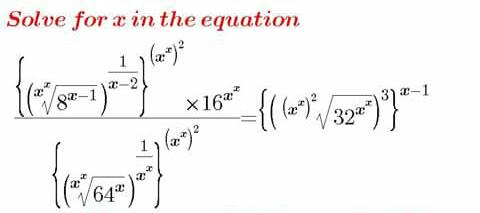
Question and Answers Forum
AlgebraQuestion and Answers: Page 328







Pg 323 Pg 324 Pg 325 Pg 326 Pg 327 Pg 328 Pg 329 Pg 330 Pg 331 Pg 332
|
Question and Answers Forum |
AlgebraQuestion and Answers: Page 328 |
| Coefficient of x^5 in the expansion of (x^2 −x−2)^5 is |
| If a,b,c are 3 positive numbers in an A.P and T= ((a+8b)/(2b−a))+((8b+c)/(2b−c)). Then the value of T^( 2 ) is ? Ans. given is 361. |

|

|

|
| (1/2)x^2 +(√2)= |

|
| 1+1 |
| p is apolynomial having n roots (x_i ) with x_i ≠xj for i≠j calculate Σ_(k=1) ^n (1/(1−x_k )) . |
| decompose F(x) = (1/((1−x)^2 (1−x^2 ))) inside R(x). |
| calculate Σ_(p=1) ^n (p/(1+p^2 +p^4 )) . |
| p is a polynomial having n simples roots (x_i )_(1≤i≤n) prove that Σ_(k=1) ^n (1/(p^′ (x_k ))) =0 |
| let p_n (x)=(x+1)^(6n+1) −x^(6n+1) −1 with n integr prove that ∀n (x^2 +x+1)^2 divide p_n (x). |
| simplify Σ_(k=p) ^(2p) (C_k ^p /2^k ) . |
| A company manufactures two types of products; X ($4.50 profit per item x) and Y ($3.00 profit per item y). These items are built using both machine time and manual labour. The X product requires 3 hours of machine time and two hours of manual labour. The Y product requires 3 hours of machine time and no manual labour. If the week′s supply of manual labour is limited to 8 hours and machine time to 15 hours, write down all inequalities involving x and y. |
| Find the sum of the coefficients of all the integral power of x in the expansion of (1+2(√x))^(40) . |

|
| Number of solutions of the equation z^3 +(([3(z^− )^2 ])/(∣z∣))=0 where z is a complex no. |
| If one vertex of the triangle having maximum area that can be inscribed in the circle ∣z−i∣=5 is 3−3i, then find other vertices of triangle. |
| Intercept made by the circle zz^− +a^− z+az^− +r=0 on the real axis on complex plane is :− |
| If z=cosθ+isinθ is a root of equation a_0 z^n +a_1 z^(n−1) +a_2 z^(n−2) +.....+a_(n−1) z+a_n =0 then prove that: i) a_0 +a_1 cos θ+a_2 cos 2θ+.....+a_n cos nθ=0 ii) a_1 sin θ + a_2 sin 2θ+....+a_n sin nθ=0. |
| Express the following in a+ib form: (((cos x+isin x)(cos y+isin y))/((cosa+isin a)(cosb+isinb))). |

|
| ∫(1/((x+1)ln(x)))dx=? |
| If y=1+x^2 +x^3 and x=1+α, where α is small, show that y≈3+5α. Hence, find the increase in y when x is increased from 1 to 1.02 |

|
Pg 323 Pg 324 Pg 325 Pg 326 Pg 327 Pg 328 Pg 329 Pg 330 Pg 331 Pg 332 |